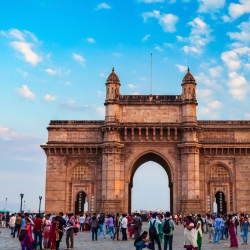Mumbai Tour
Travel Itinerary
Tourist Information about Mumbai (Bombay)
Mumbai is the capital of Maharashtra State and the gateway to this beguiling subcontinent. Of the four great cities in India, Mumbai is the most cosmopolitan, spearheading India's move into the 21st century.
The word Mumbai is derived from Mumbadevi, the patron goddess of the Koli fisherfolk, the oldest inhabitants of Mumbai. The name Mumbai, in its final form, dates back to the 18th century. For the Portuguese, the name Bombay means "Good Bay" ("Bom" "Bay" Good Bay). Mumbai is a cluster of seven islands. These islands of no great value were ceded to the Portuguese in 1534 by the Sultan of Gujarat. The Portuguese, in turn, gave these islands to England's Charles II as part of the wedding dowry of Catherine of Braganza when she married Charles II in 1661. In 1668, the British government leased the islands to the East India Company for 10 pounds per annum in the form of gold, and Mumbai grew gradually to become a center of trade.

Access
Mumbai is well linked to most parts of the globe by air. Domestic airlines link it to major towns in India. Mumbai is well connected to most major Indian towns by rail. It is also connected to surrounding cities by road. Maharashtra Tourism Development Corporation and ITDC conduct tours in and around Mumbai.
Tourist Places in Mumbai
Gateway of India
What could be a more appropriate beginning than the 'entrance' to the port of Mumbai? The ceremonial arch was built in 1927 to commemorate the visit of King George V and Queen Mary for the Delhi Durbar in 1911. Constructed in honey-colored basalt, the gateway was designed by George Wittet, inspired by the 16th-century Gujarat style. The changing light of the rising and setting sun gives varied hues of gold, russet, and pink to the imposing arch. Historically, the Gateway holds greater significance as the last of the British troops left Independent India by sea, marching through its portals.

Crawford Market
Rechristened as Mahatma Phule Market, it was built in 1871 by William Emerson. The bas-reliefs, at a height, adorning the facade, were designed by J. L. Kipling at the School of Art, a stone's throw away. It is the largest wholesale fruit market in the country, and a visit there can be a 'fruitful' experience, especially during the mango season. But sadly, most of the vegetables and fruits are moving to New Mumbai's wholesale market.
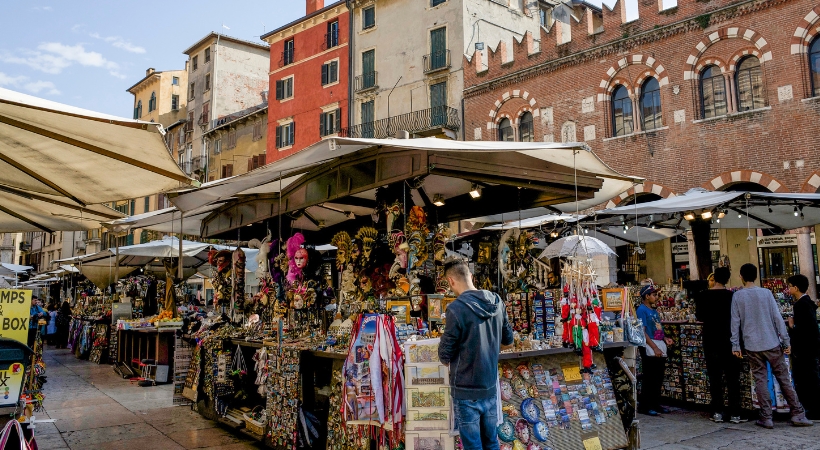
Town Hall
With its columns and tall Grecian porticos, this structure has been the foundation of the Library Society of Mumbai, which moved into the Town Hall in 1830, soon after which a union was effected with the Royal Asiatic Society of Great Britain and Ireland. One of its greatest assets is its library, a storehouse of knowledge, which may not have an equal in the east.

Flora Fountain
It stands at a busy five-point intersection in the heart of the commercial Fort area. The beautifully sculptured fountain was erected in memory of the Governor, Sir Henry Bartle Edward Frere, as a tribute for his contribution towards the building of Mumbai. Hutatma Chawk (Martyrs Square) is the new name given to the area around it, as a memorial to those who lost their lives in the fight for setting up the state of Maharashtra in the Indian Union. The spot is also a popular landmark for the congregation of rallies and meetings - both political and apolitical.
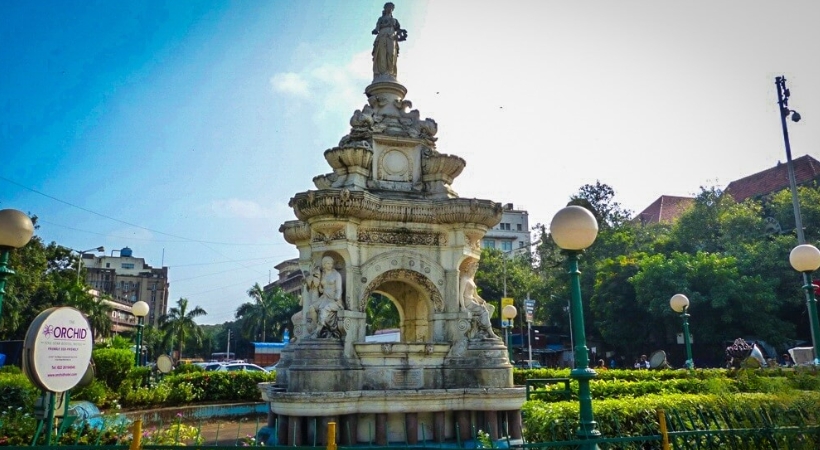
Fort
This is the older, downtown area (with the Nariman Point reclamation being the newer commercial center), surrounding the Flora Fountain. It gets its name from the fact that it was a part of the fortified city, which was later considered obsolete and demolished during the time of Governor Frere. A small portion of the wall is seen as part of the boundary wall of St. George's Hospital.
Shivaji Terminus
One of the finest examples of high Victorian Gothic architecture, it is the headquarters of the Central Railways and is one of the finest railway stations in the world.
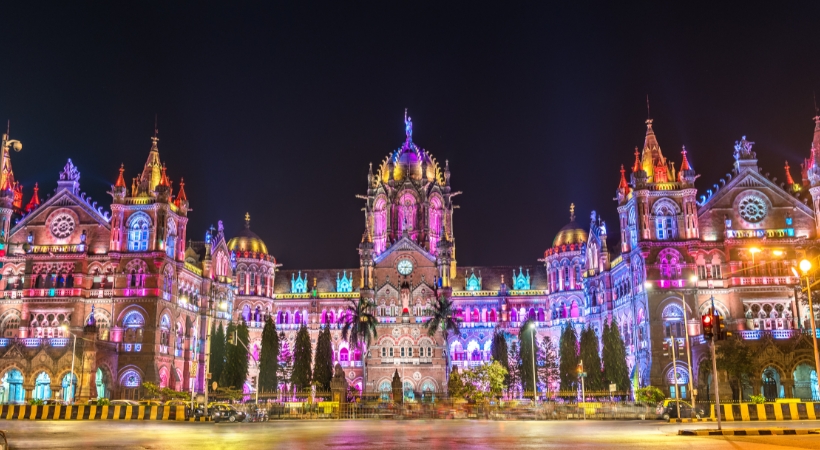
Marine Drive
This sweeping Queen's Necklace, flickering with a thousand lights at night, turns into the main thoroughfare linking Malabar Hill and the northern parts of the island to the southernmost points of Colaba and Cuffe Parade.
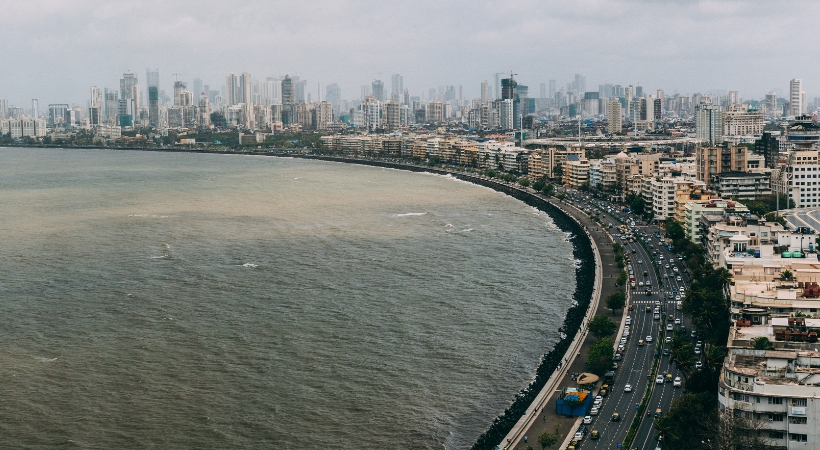
Chowpatty (Girgaum)
Situated at the northern end of Marine Drive, it is a stretch of sandy beach and attracts hordes of people during weekends and holidays. A 'food-mart' of stalls has become a permanent feature, offering a range of eatables from 'bhel-puri', the local specialty, to 'chaat', 'kulfi', coconut, and other snacks. A larger portion of the terrain is left open for the public where people come to enjoy the evening sea breeze and children come to play. As part of the city's cleanliness and beautification drive, Chowpatty is also being given a facelift.
Juhu
Situated 30 km from the city, Juhu is a crowded beach with residential apartments and bungalows surrounding it. It seems as if the entire population of the area descends on the beach for a breath of fresh air. The central part has food stalls, similar to Chowpatty, and a lot more, in terms of fun-rides for children.
Beaches Beyond the City
Beyond the city are the relatively unspoiled, secluded beaches at Versova, Madh Island, Marve, Manori, and Gorai. However, Versova is also seemingly going the Juhu way, primarily on account of the density of high-rise buildings that have come up in recent years. The beaches at Madh and Marve have dangerous spots, which are marked by signboards. Care should be taken to avoid these zones. The spots further ahead, Gorai and Manori, two fishing villages, are accessible by ferry.
